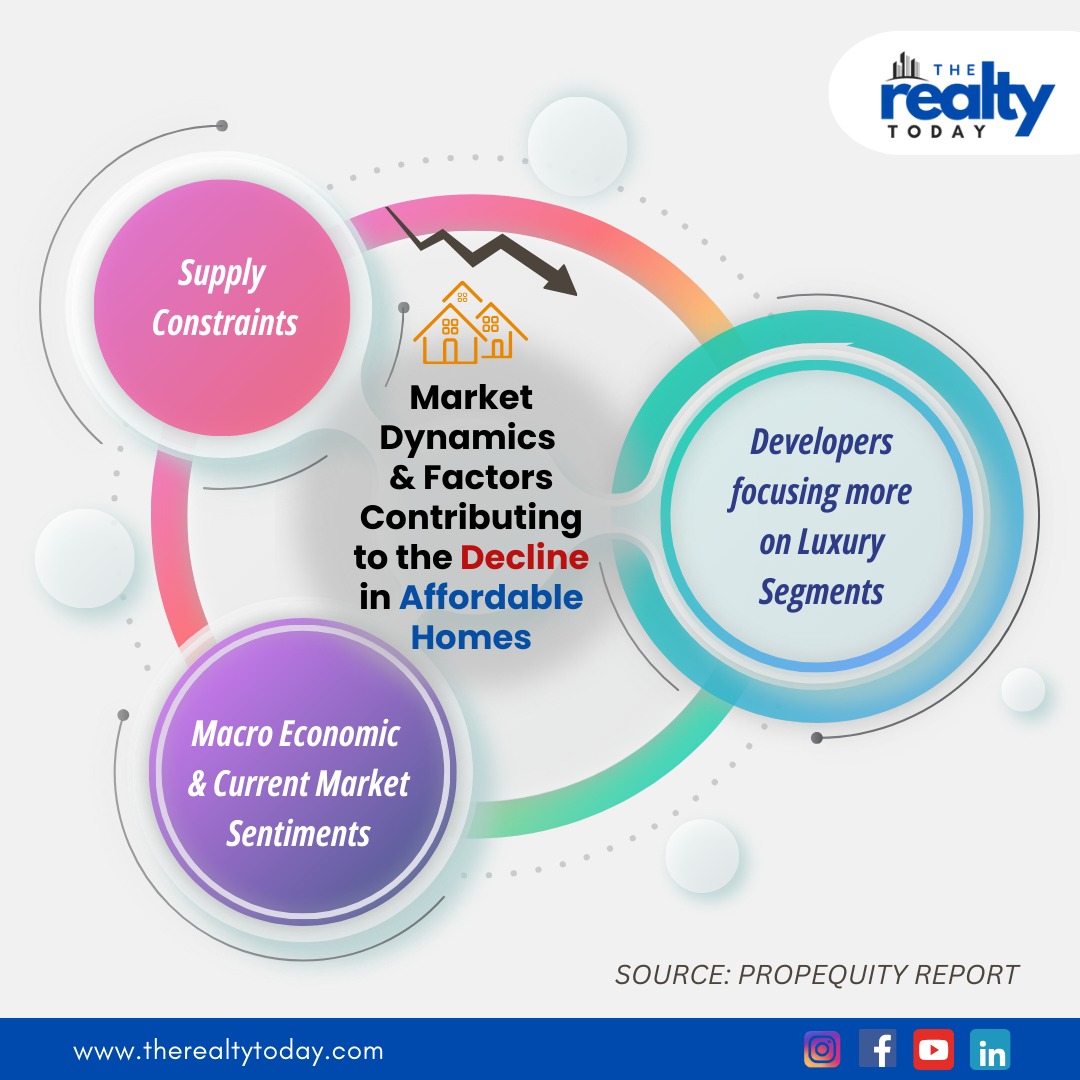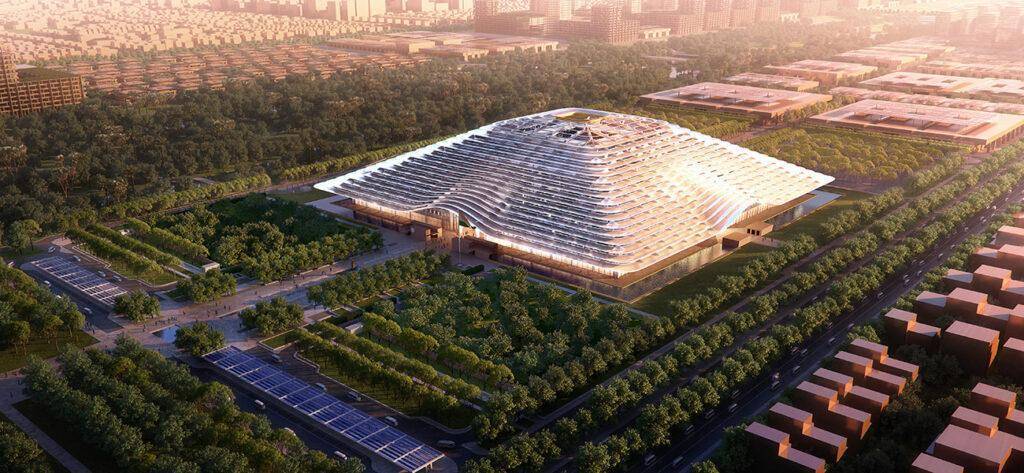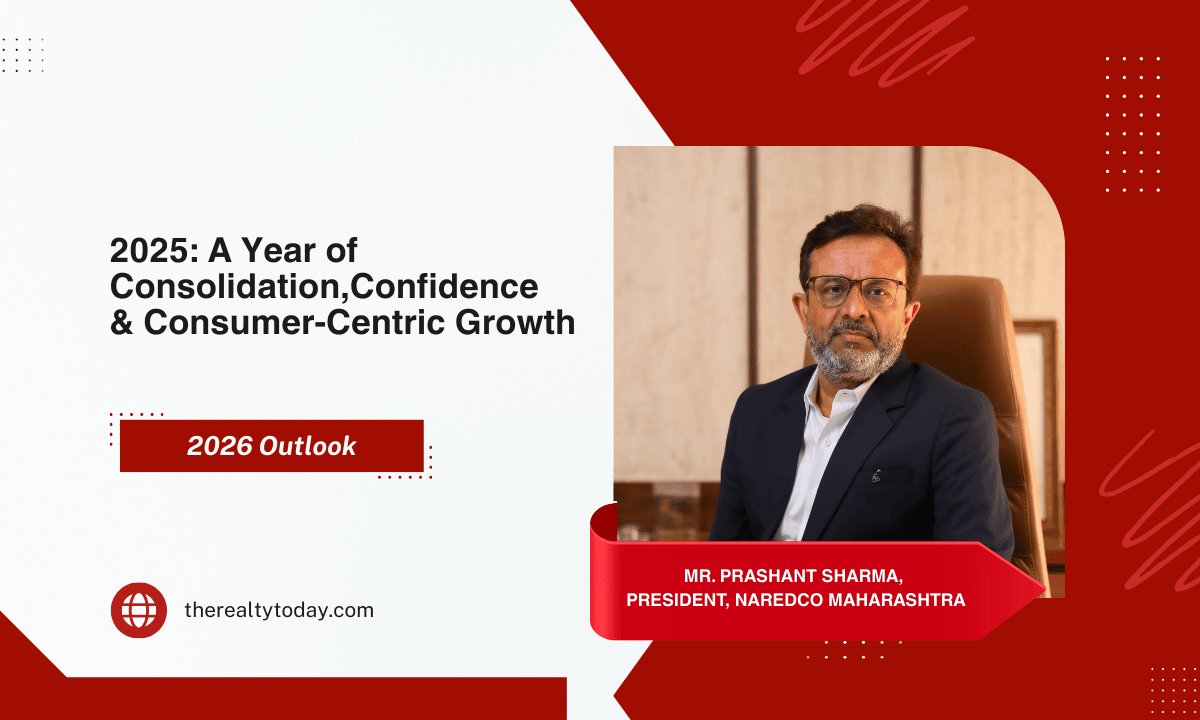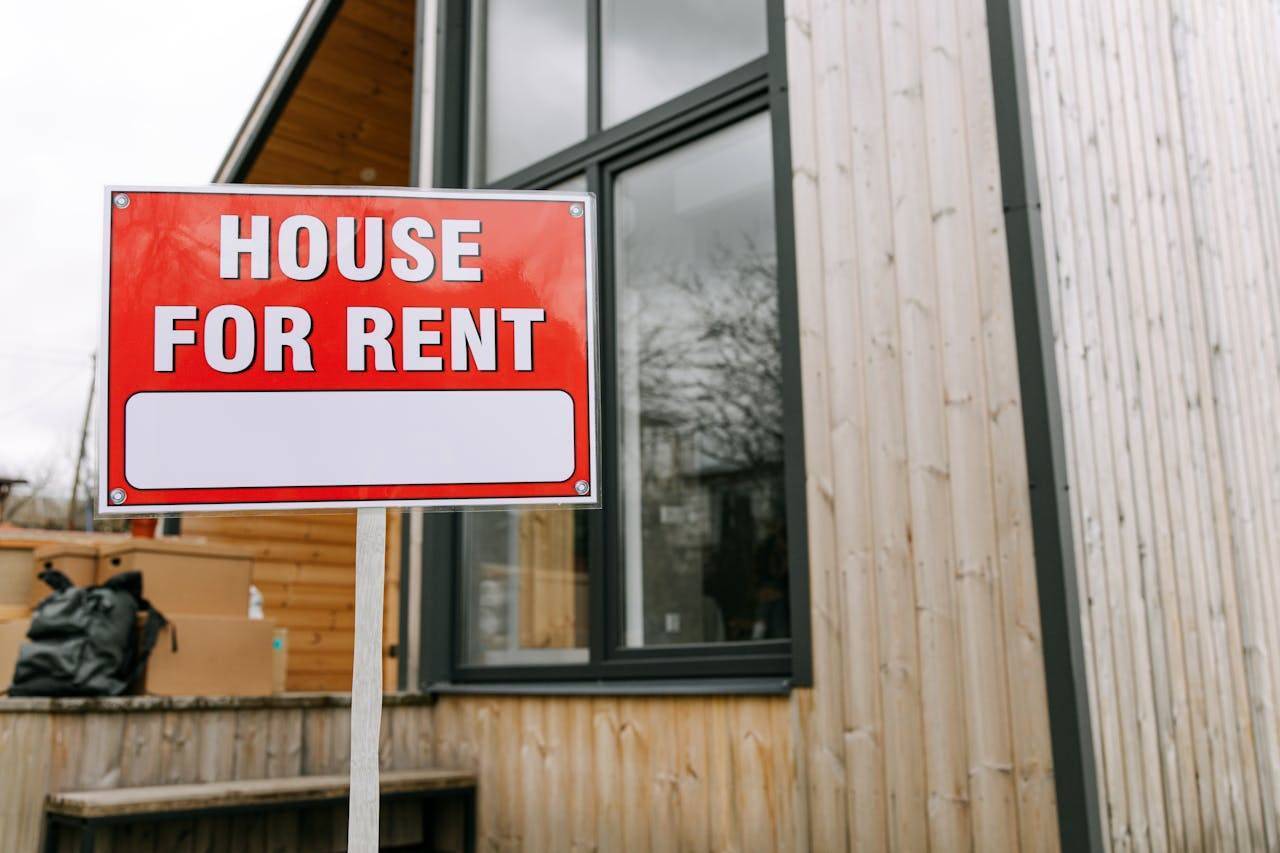In recent findings by PropEquity, a leading real estate data analytics firm, there has been a noticeable 4% decline in the sales of affordable homes priced up to Rs 60 lakh across India's top eight cities during the first quarter of 2024. This decline, compared to the same period last year, underscores significant shifts in market dynamics and consumer preferences within the housing sector.
City-wise Analysis of Sales Performance
- Mumbai Metropolitan Region (MMR): MMR witnessed a modest increase in sales, with 28,826 units sold in Q1 2024 compared to 23,401 units in Q1 2023. This suggests resilience in Mumbai's real estate market amidst broader declines.
- Pune: Sales in Pune declined to 12,299 units from 14,532 units, reflecting a slowdown in Maharashtra's real estate sector.
- Ahmedabad: The city recorded a decrease in sales, with figures dropping to 6,892 units from 8,087 units, indicating localized challenges in housing demand.
- Hyderabad: Hyderabad city saw a decline in sales with figures dropping from 3,674 units to 3,360 units in sales volume.
- Chennai: Chennai decreased from 3,295 units to 2,003 units, highlighting regional variations in market performance.
- Bengaluru: Sales in Bengaluru significantly dropped from 5,193 units to 2,801 units, reflecting shifting market dynamics in Karnataka's capital.
- Delhi-NCR: The region saw a notable decline, with sales falling from 2,774 units to 1,199 units, illustrating broader economic challenges impacting North India's real estate sector.
- Kolkata: Kolkata, however, experienced an increase in sales to 3,741 units from 2,831 units, suggesting localized market resilience.
Market Dynamics & Factors Contributing to the Decline
The decrease in affordable home sales can be attributed to several key factors:
1. Supply Constraints: One of the primary reasons for the decline in sales is the reduced supply of affordable housing units. PropEquity reports a drop in the fresh supply of homes priced up to Rs 60 lakh, from 53,818 units in the first quarter of 2023 to 33,420 units in the corresponding period of 2024. This constrained supply has limited options for potential homebuyers in this price segment.
2. Developer Focus on Luxury Segments: Developers are increasingly focusing on launching luxury housing projects. These projects often promise higher profit margins compared to affordable housing initiatives. The shift in focus has been driven by a surge in demand for premium residential properties in urban centers, leading developers to prioritize high-end segments over affordable options.
3. Economic and Market Sentiments: The broader economic environment and market sentiments also play a crucial role. Factors such as fluctuating interest rates, regulatory changes, and consumer confidence levels significantly influence home buying decisions. Economic uncertainties and the aftermath of the COVID-19 pandemic continue to impact buyer behavior, contributing to the subdued demand for affordable homes.

Long-term Trends and Economic Implications
Over the past five years, the affordable housing segment has demonstrated resilience amid economic fluctuations. After a downturn during the COVID-19 pandemic in 2020, sales gradually recovered before facing challenges again in 2023. This cyclic pattern highlights the sector's sensitivity to macroeconomic factors and regulatory frameworks.
Future Outlook:
To revive the affordable housing market, collaborative efforts are essential among developers, policymakers, and financial institutions:
- Policy Support: Continued policy interventions, such as incentives for affordable housing projects and streamlined approval processes, can stimulate supply in this critical segment.
- Infrastructure Investments: Enhancements in infrastructure and connectivity can increase the attractiveness of affordable housing projects, unlocking new development opportunities.
- Financial Inclusion: Improving access to finance through subsidized lending rates and targeted housing schemes can broaden the pool of potential homebuyers.
- Technology Adoption: Embracing digital platforms and innovative construction technologies can optimize costs and accelerate project timelines, making affordable housing projects more viable.
Conclusion
While the sales of affordable homes have declined in the first quarter of 2024 across India's major cities, the sector remains resilient with pockets of growth amidst challenges. Addressing supply-side constraints, fostering policy stability, and bolstering consumer confidence are critical to unlocking the full potential of the affordable housing market in India's evolving real estate landscape. As stakeholders navigate these challenges and opportunities, proactive measures and strategic investments will be pivotal in shaping a sustainable and inclusive housing market for the future.
Image source- athomewithkrista.com









.png)